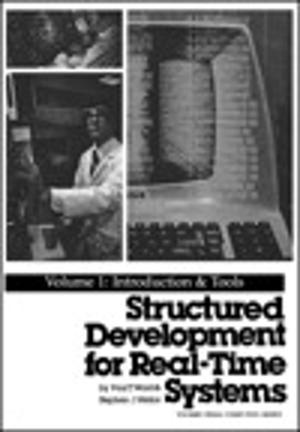The Science of Successful Organizational Change
How Leaders Set Strategy, Change Behavior, and Create an Agile Culture
Business & Finance, Management & Leadership, Planning & Forecasting, Leadership, Management| Author: | Paul Gibbons | ISBN: | 9780133994827 |
| Publisher: | Pearson Education | Publication: | May 15, 2015 |
| Imprint: | Pearson FT Press | Language: | English |
| Author: | Paul Gibbons |
| ISBN: | 9780133994827 |
| Publisher: | Pearson Education |
| Publication: | May 15, 2015 |
| Imprint: | Pearson FT Press |
| Language: | English |
Every leader understands the burning need for change–and every leader knows how risky it is, and how often it fails. To make organizational change work, you need to base it on science, not intuition. Despite hundreds of books on change, failure rates remain sky high. Are there deep flaws in the guidance change leaders are given? While eschewing the pat answers, linear models, and change recipes offered elsewhere, Paul Gibbons offers the first blueprint for change that fully reflects the newest advances in mindfulness, behavioral economics, the psychology of risk-taking, neuroscience, mindfulness, and complexity theory.
Change management, ostensibly the craft of making change happen, is rife with myth, pseudoscience, and flawed ideas from pop psychology. In Gibbons’ view, change management should be “euthanized” and replaced with change agile businesses, with change leaders at every level. To achieve that, business education and leadership training in organizations needs to become more accountable for real results, not just participant satisfaction (the “edutainment” culture).
Twenty-first century change leaders need to focus less on project results, more on creating agile cultures and businesses full of staff who have “get to” rather than “have to” attitudes. To do that, change leaders will have to leave behind the old paradigm of “carrots and sticks,” both of which destroy engagement.
“New analytics” offer more data-driven approaches to decision making, but present a host of people challenges—where petabyte information flows meet traditional decision-making structures. These approaches will have to be complemented with “leading with science”—that is, using evidence-based management to inform strategy and policy decisions.
In The Science of Successful Organizational Change , you'll learn:
- How the VUCA (Volatile, Uncertain, Complex, and Ambiguous) world affects the scale and pace of change in today’s businesses
- How understanding of flaws in human decision-making can help leaders guide their teams toward wiser strategic decisions when the stakes are largest—including “when to trust your guy and when to trust a model” and “when all of us are smarter than one of us”
- How new advances in neuroscience have altered best practices in influencing colleagues; negotiating with partners; engaging followers' hearts, minds, and behaviors; and managing resistance
- How leading organizations are making use of the science of mindfulness to create agile learners and agile cultures
- How new ideas from analytics, forecasting, and risk are humbling those who thought they knew the future–and how the human side of analytics and the psychology of risk are paradoxically more important in this technologically enabled world
- What complexity theory means for decision-making in the context of your own business
- How to create resilient and agile business cultures and anti-fragile, dynamic business structures
To link science with your "on-the-ground" reality, Gibbons tells “warts and all” stories from his twenty-plus years consulting to top teams and at the largest businesses in the world. You'll find case studies from well-known companies like IBM and Shell and CEO interviews from Nokia and Barclays Bank.
Every leader understands the burning need for change–and every leader knows how risky it is, and how often it fails. To make organizational change work, you need to base it on science, not intuition. Despite hundreds of books on change, failure rates remain sky high. Are there deep flaws in the guidance change leaders are given? While eschewing the pat answers, linear models, and change recipes offered elsewhere, Paul Gibbons offers the first blueprint for change that fully reflects the newest advances in mindfulness, behavioral economics, the psychology of risk-taking, neuroscience, mindfulness, and complexity theory.
Change management, ostensibly the craft of making change happen, is rife with myth, pseudoscience, and flawed ideas from pop psychology. In Gibbons’ view, change management should be “euthanized” and replaced with change agile businesses, with change leaders at every level. To achieve that, business education and leadership training in organizations needs to become more accountable for real results, not just participant satisfaction (the “edutainment” culture).
Twenty-first century change leaders need to focus less on project results, more on creating agile cultures and businesses full of staff who have “get to” rather than “have to” attitudes. To do that, change leaders will have to leave behind the old paradigm of “carrots and sticks,” both of which destroy engagement.
“New analytics” offer more data-driven approaches to decision making, but present a host of people challenges—where petabyte information flows meet traditional decision-making structures. These approaches will have to be complemented with “leading with science”—that is, using evidence-based management to inform strategy and policy decisions.
In The Science of Successful Organizational Change , you'll learn:
- How the VUCA (Volatile, Uncertain, Complex, and Ambiguous) world affects the scale and pace of change in today’s businesses
- How understanding of flaws in human decision-making can help leaders guide their teams toward wiser strategic decisions when the stakes are largest—including “when to trust your guy and when to trust a model” and “when all of us are smarter than one of us”
- How new advances in neuroscience have altered best practices in influencing colleagues; negotiating with partners; engaging followers' hearts, minds, and behaviors; and managing resistance
- How leading organizations are making use of the science of mindfulness to create agile learners and agile cultures
- How new ideas from analytics, forecasting, and risk are humbling those who thought they knew the future–and how the human side of analytics and the psychology of risk are paradoxically more important in this technologically enabled world
- What complexity theory means for decision-making in the context of your own business
- How to create resilient and agile business cultures and anti-fragile, dynamic business structures
To link science with your "on-the-ground" reality, Gibbons tells “warts and all” stories from his twenty-plus years consulting to top teams and at the largest businesses in the world. You'll find case studies from well-known companies like IBM and Shell and CEO interviews from Nokia and Barclays Bank.















